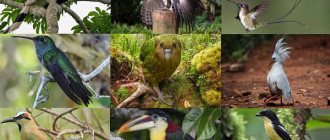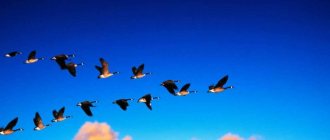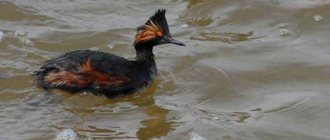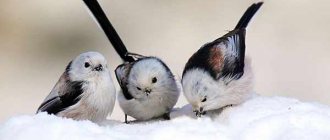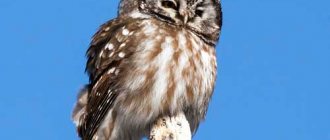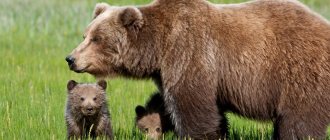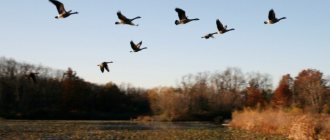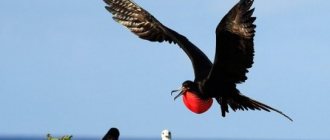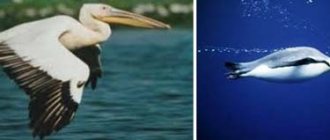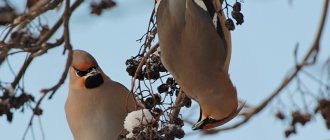Predators, as a rule, are those who eat food of animal origin rather than plant origin. Birds of prey are hunters. But not all hunters are classified as predators, since most birds feed on flesh.
For example, most small birds eat insects or feed insects to their young. Even hummingbirds eat small insects and spiders. Terns, gulls and herons eat fish, so how can you tell common birds from predators?
The main difference between birds of prey is their body morphology (powerful claws and beak adapted for capturing, killing and eating prey) and the ability to hunt in flight. Their sizes vary from 60 gr. up to 14 kg.
There are about 287 species of birds of prey in the world, and experts classify them differently. According to one classification system, they are divided into two groups:
- Falconiformes (falcon-shaped);
- Strigiformes (owls).
Both of these orders share the two main specific characteristics listed above: powerful claws and hooked beaks.
Falconiformes are mainly diurnal (active during daylight hours), Owls are mainly nocturnal (active at night).
These two orders of birds are not related to each other, but have similar characteristics in their hunting style.
Representatives of both groups are found on Russian territory.
Bird fauna of Russia
The bird fauna of Russia is represented by all species of birds that have been recorded in the country. This list contains 790 species. These include endemic species, that is, those that are found exclusively within the Russian Federation. For example, black crane, sandpipers, grouse, etc.
Birds of Russia, illustration
The total number of birds, taking into account subspecies, is 1334 geographical forms. It is also worth highlighting such categories as nesting (657 species) and vagrant (110 species). Migratory birds can be seen only when they arrive for the winter or migrate.
Preparing for the hunt
In order for a bird of prey to become your indispensable assistant, it must be tamed until it gets used to you. To do this, you need to feed her yourself, often carry her on your arm, using a hood that covers her eyes. After these operations, the bird will feel calm in your hand. Once she gets used to you, you can start teaching her to hunt.
The hunting bird is not given food for several days and is deprived of the opportunity to rest and sleep. These days, the bird is carried on one’s arm as often as possible. After this, they are taught to eat from the hand, then released a short distance, controlling the flight with a long cord, and lured using a set call. It would be ideal if the bird flies at your call without the use of bait or tethers. Then the predator is taught to hunt directly, first using a special stuffed animal (lure), and then live bait. The end of this stage of training is that the bird will not peck the prey, but will simply bring it to the owner.
Practice shows that the easiest to train are chicks that have been taken out of the nest, it is more difficult with young fledglings, and it is practically impossible to train an adult large hunting bird to help in hunting. However, although chicks taken from the nest are easily trained, they grow much weaker and slower than adolescents or adults of falcons.
It will take about 1 month for the bird to learn to help you hunt. The service life of feathered hunters often exceeds 10 years. If the bird stops helping you in the hunt, it means it has served you its purpose.
Units
Division into orders is one of the main scientific classifications of birds. This is one of the levels of the hierarchical system, which is above the family and below the class. The most numerous units within our country:
- Anseriformes (swans, geese, geese, ducks, etc.);
- Charadriiformes (magpies, lapwings, plovers, etc.);
- Passeriformes (larks, swallows, wagtails, etc.);
- Falconiformes (eagles, vultures, harriers, kites, etc.).
The most numerous orders of birds in Russia
Interesting Facts
Even during the reign of the kings, birds of prey wore armor. In addition to the hood worn over the eyes, the predators had the costume of the royal court, which included a breastplate, leggings, a cap and a debtor. Legs are leather rings worn on the paws. The debtor is a cord that was attached to the leggings at one end, and the hunter held the other end in his hand. Cowls were worn not only after the hunt, so that the bird could rest, but also on the way to the hunting site. This was done so that the bird, seeing its potential victims, would not throw itself from the hand and thereby stretch its tendons.
List of birds by habitat
Birds of Russia, depending on their habitat, are divided into the following categories:
- urban;
- aquatic (river, sea);
- forest;
- field;
- tundra;
- arctic.
Map of natural zones of Russia
Representatives of one category or another have adapted to the conditions of their zone. This adaptation is reflected in all components: lifestyle, nutrition, social behavior, etc.
Hunting with birds of prey
First of all, the hunter should know that when a bird molts, it is unable to assist in the hunt. Typically, birds of prey molt twice a year - in summer and autumn. The best time to hunt with trappers is early spring, late autumn and winter. The best time of day for hunting is considered to be morning or evening, before dark. Having approached the game, hunters set their birds of prey to steal.
You should also not hunt in bad weather. If the hunt is for large prey, then greyhounds are also involved. In one season, on average, a hunter with experience and well-trained hunting birds catches about 50 foxes, and in 1 day - up to 10 pheasants and 50 quails.
Urban
Birds that have changed their lifestyle and habits due to the urbanization of areas are called urban birds. They were forced to adapt to new conditions and settled next to people.
Starling - city bird
Rock pigeon
The pigeon can have a variety of appearances, as this species has 28 color types or morphs. The most common option is a dark gray color with multi-colored tints (purple, copper, green). The wings have black stripes, but the inside is almost white. Individuals reach about 30 cm in length. They make careless nests from plant stems.
Rock pigeon
Wagtail
The variety of wagtails within our country is quite large. But a white wagtail settled next to the people. This is a small bird, up to 18 cm in length and weighing about 20 g. The bird constantly swings its long tail. This is where its name came from. The color is predominantly gray with a light belly. Prefers to settle near bodies of water.
White wagtail
Starling
Starlings are small birds, about 20 cm long and weighing up to 75 g. They are known for their unique plumage with multi-colored tints, which, moreover, changes depending on the time of year. In terms of diet, starlings are omnivores. And they like to make their homes in hollow trees.
Starling
Sparrow
The most famous and widespread species living in urban environments. It weighs only about 30 g, and the body length is no more than 16 cm. It is distinguished by its brown color with black and brown splashes. The cheeks and belly are light. It is noteworthy that sparrows do not live away from people. They feed on seeds, insects, and fruits.
Sparrow
Martin
Swallows spend most of their time flying. They have a small body (up to 23 cm), long thin wings, and the structure of their legs does not allow them to fully move on the ground. Among this family there is even a separate urban species that stays close to people. It feeds on insects and builds strong nests. It uses house walls and other surfaces as support.
Martin
Redstart
A bright bird about 14 cm long. The color combines shades of red, gray, as well as white and black. Her tail is also colored deep orange and is in constant motion. Hence the name of the species. The common redstart is distributed throughout the country, and other species are found in southern Siberia.
Redstart
Merlin
Merlin is a predatory, diurnal bird of the Falcon family. The Merlin is a relatively small bird, its body length is up to 32 cm, its wingspan is up to 73 cm. Females are slightly larger than males and weigh up to 300 grams, while the weight of males is in the range of 150-230 grams. In Russia, the Merlin lives in the Arkhangelsk, Smolensk, Moscow, Ryazan, Nizhny Novgorod regions, as well as in Tatarstan, Yakutia, Yamal and Taimyr. For the winter, the merlin flies to warmer regions, where small birds fly, which it hunts both in Russia and in the south. In addition to birds, the merlin's prey includes small rodents and insects. The merlin makes its nest on the ground or in trees, but it can survive from the native nest of smaller and weaker birds. The female lays 3-4 eggs, the chicks appear in a month, and after another month they begin to fly out of the nest. The family flies south in early autumn.
Merlin
Water
Birds that prefer an aquatic habitat can be divided into river and sea birds. Their species diversity is quite large. However, these individuals are united by a love of swimming and dietary features: fish, small sea and river animals, and mollusks.
Interesting: The most unusual birds in the world - list, description, photos and videos
Waterfowl
River
The territory of Russia is rich in large and small rivers and lakes. Therefore, there are all the necessary conditions for the existence of river bird species. Valleys near reservoirs simultaneously serve as places for them to feed, nest, molt, rest, etc.
Kabansky reserve (Baikal)
Turpan
Belongs to the Anseriformes family. The length of the scoter reaches about 55 cm on average. Weight – a little more than 1 kg. The male and female are slightly different in size and color: males are black and females are brown. They feed on small river fish and shellfish. Turpan is an endangered species.
Turpan
Interesting fact : scoters are able to dive 10 m deep into a reservoir in search of food, and also spend about a minute under water.
Kingfisher
Kingfishers are no larger than sparrows, but are distinguished by their extremely bright colors and long beaks. They have a blue back and a reddish belly, and white feathers on the sides of their heads. For nesting, kingfishers dig holes on river cliffs. Sometimes, in search of food, a bird can fly at high speed just above the surface of the water.
Kingfisher
Sailor
Other names for the bird are alley, sauk. Belongs to Anseriformes. A characteristic feature of long-tailed ducks is a long, thin tail, characteristic of males. Both males and females regularly change color depending on the mating season, age, and time of year. Sailors are capable of diving deeply - up to 60 m.
Sailor
Loon
There are three species of loons in the Russian Federation: black-throated, red-throated and arctic. Black-throated is the most common. Body length is about 60-75 cm. Males weigh from 2.4 to 3.4 kg, and females are smaller. Loons change color depending on age and season.
Black-throated Loon
Whooper swan
Large graceful birds are up to 1.8 m in length and weigh about 10 kg. They prefer to make huge nests on lakes and in reeds. Swans are known for forming pairs for many years. Whoopers make loud noises both while swimming and in flight. They feed on plants and aquatic invertebrates.
Whooper swan
Marine
Many aquatic birds of Russia are found on the shores of the Okhotsk, Bering and other seas. Bird markets are formed here. These zones serve as a haven for both permanent and migratory inhabitants.
Bird market, Sea of Okhotsk
Hatchet
The hatchet belongs to the order Charadriiformes. The bird's body is about 40 cm long, weight - on average 700 g. The color is predominantly dark - black, brown, with the exception of white cheeks, an orange beak, yellow paws and long bright feathers behind the eyes. Birds unite in large colonies. They fly, swim and dive very well.
Hatchet
Interesting fact : several geographical features are named after the toporka. For example, Toporkovy Island (Kuril Islands) and Toporkov Island (Commander Islands).
Storm petrel
In the Russian Federation, the family of storm petrels is represented by two species – black and gray, which have much in common. Storm petrels are small in size, but have long wings. Birds move very quickly and from a distance they can be confused with swallows. The diet of storm petrels consists of small fish and plankton.
Storm petrel
White-tailed eagle
A large bird of prey that weighs 5 kg on average, and the body grows to almost 1 m in length. The color is brown with lighter plumage on the chest. The name of the species comes from the white tip of the tail. It is noteworthy that females are larger than males. Eagles feed on fish, so they live near bodies of water. The nests are built large - 1 m in height and 2 m in length. Listed in the Red Books (RF and international).
White-tailed eagle
Interesting fact : the wingspan of a white-tailed eagle is up to 2.5 meters.
Cormorant
Of the Cormorant family, the most common species in the country is the Bering cormorant. It is distinguished by its black color with a metallic sheen. Females are usually larger (body up to 77 cm in length and weight about 1.5 kg). Cormorants have at least 6 color changes, which depend on the mating season.
Bering cormorant
Guillemot
There are two types of guillemots: thin-billed and thick-billed, which are very similar in appearance. They are common on the shores of the Far Eastern seas. The basis of the diet is fish. Murres have a conservative character, which can be seen in monogamy and a permanent nesting site. Guillemots are more adept at swimming than at staying in the air.
Guillemot
Birds of prey of Ukraine - photos and names
Among the most common birds of prey on the territory of Ukraine is the shulika (aka the black kite, which we talked about above). Also, many of the birds described above partially live in this country.
Kobchik
Birds of Prey of Ukraine - photo by Kobchik (by Michele Lamberti).
This bird of prey from the genus of falcons has quite small dimensions - a wingspan of up to 77 cm, and a maximum weight of 200 grams. It is not difficult to guess that the falcon will not catch a hare - the basis of its diet are beetles, dragonflies, and grasshoppers. Sometimes it also catches lizards, small mice, and sparrows.
Gray owl
Photo of birds of prey - Great Gray Owl (photo by Sue Cro).
Another bird from the owl family, widespread throughout almost all of Europe. Its dimensions are average - body length up to 38 cm and weight from 400 to 640 g. In nature, these are nocturnal hunters.
Forest
The greatest diversity of birds is found in deciduous and cedar-broadleaf forests. All kinds of trees in such forests contribute to the settlement of various birds. Coniferous forests are not very populated by birds, but even here they have their own characteristics. Woodpeckers, owls, partridges, etc. live here.
Woodpecker in the forest
Golden eagle
The golden eagle is listed in the Red Book of the Russian Federation. Females are considered larger, they can weigh up to 7 kg and have a body almost a meter long. Golden eagles are distinguished by their dark brown color and long wings and rounded tail. Birds have powerful paws with sharp claws with which they hold prey.
Interesting: Bowerbird nests: photos and videos
Golden eagle
Interesting fact : golden eagles build huge nests from thick tree branches, grass, and wool. Even a horse can fit in such a nest.
Grouse
The genus of black grouse has several species. Among them there is also an endemic - the Caucasian grouse. Females and males are very different from each other. Males are larger, heavier, and have a black coloration that is tinged with blue and green colors. Females have a brownish-red color. They make nests on the ground.
Grouse
gray heron
The gray heron can be easily recognized by the typical characteristics of the species: long neck, height up to 1 meter, long legs, large beak. It moves easily through swampy areas. During flight, the bird folds its neck in a peculiar way in the shape of the letter “S”. It is a predator by nature.
gray heron
Swift
Black swifts are larger in appearance than swallows. They weigh about 40 g and reach 18 cm in length. Outwardly, the bird appears completely black, but the plumage has light gray tones. There are no differences between males and females. The wings of swifts are long and sickle-shaped. Birds fly very quickly, sometimes gliding, sometimes actively flapping their wings.
Black swift
Interesting fact : the flight speed of a swift can be 120-180 km/h. The bird is able to stay in the air for several years without stopping. Swifts descend to the surface only to breed.
Nightingale
Nightingales are distinguished by their miniature size (body 18 cm, weight 25 g) and brown color. They love the presence of trees and water. Birds build cup-shaped nests from leaves. They feed mainly on worms and insects, as well as berries. A characteristic feature of the nightingale is its ringing and melodious singing.
Nightingale
Hawk owl
One of the species of the owl family. It is distinguished by its medium size, beautiful color (brown spotted back and light front with thin contrasting stripes), and the absence of “ears” on the head. The diet consists of small birds and rodents. Nests in hollows and on stumps.
Hawk owl
Buzzard (buzzard)
Buzzard (buzzard) is a daytime hunter, a bird of prey of the Accipitridae family. In Russia, it lives in the Urals and Siberia, preferring to settle in forests and forest-tundra. The bird is of medium size, body length is about 55 cm, wingspan is up to 130 cm. It hunts with small rodents and small birds, and during times of scarce hunting it also feeds on carrion. It flies to warmer climes in the middle or end of August, or in mid-September, and returns to the nesting site in April or May. The buzzard lives and hunts alone, but before leaving it gathers in flocks. The buzzard builds nests from deciduous and coniferous trees, from dry branches and brushwood, and entwines them with grass stems. There are 3-4-5 eggs in a clutch, laying occurs in April or May, the chicks appear after 33-36 days, they are fed by both parents until the age of 44-50 days, when they fly out of the nest and begin to get food on their own. In general, buzzards are good parents, and in captivity they can take care of other people's chicks.
Buzzard (buzzard)
Field
Field or meadow birds are distinguished by a variety of species. They prefer dense thickets. Many species have a camouflage color, so they are not easy to see among meadow grasses and shrubs.
A pair of demoiselle cranes in the steppe
Lapwing
Another name for the bird is pigtail, which belongs to the Rzhankov family. Individuals reach 30 cm in length and weigh about 200 g. The color of the lapwing is very colorful, and its characteristic feature is a small crest on the head. Pigalits feed mainly on insects and seeds.
Lapwing
Lark
The field lark has a light brown color, which allows it to remain almost invisible among thickets of dry grass. Male larks are larger than females. On the head there is a small curled crest. Meadows, fields and steppes are the lark’s natural habitat. It cannot be found among the dense trees.
Lark
Dumb Quail
The mute or Japanese quail is a migratory bird that has been domesticated by humans. Many consider it a subspecies of the common quail, since these birds are very similar except for some external differences and sounds made. Quail is widespread in Primorye.
Dumb Quail
Bustard
Bustards are very large birds. Males weigh up to 16 kg, body length is a little more than a meter. Females are half the size. Bustards are distinguished by their beautiful varied plumage, which combines shades of black, white, red and gray. Birds fly skillfully, but prefer to move on the surface.
Bustard
Tit family
Blue tits are another bird of central Russia. The head of the individuals is white, there is a black stripe on the chest and around the “cheeks”. The head is decorated with a “blue” cap, the plumage on the tail is of a similar color, the back is green, and the belly and chest are yellow. Birds are not afraid to spend the winter in the middle zone; they love to settle in deciduous gardens. These are sedentary and at the same time nomadic birds. They prefer to build their nests in tree hollows. Birds with greenish-blue plumage lay eggs that have small red-brown spots; the laying period falls in April-May.
Blue tits are another bird of central Russia
The tit is a yellow bird that lives next to humans. She loves to carefully examine trees and bushes in search of food. With the first warm rays of the sun, awakening all living things from the cold winter, the beautiful singing of tits begins to be heard. This small bird with a yellow breast starts its spring trills associated with the mating season. Tit songs can only be heard at this time. The yellow-breasted bird from the tit family is a permanent inhabitant of the Moscow area.
The tit is a yellow bird that lives next to humans
Great tits are the largest individuals of the tit family. The plumage of the head and throat is black, and the wings have a bluish tint. The chest of the tit is filled with yellow except for the longitudinal black stripe. The “cheeks” and a small spot on the back of the head are snow-white. These are wintering birds that feed mostly on worms and insects. Large individuals are able to eat as much food per day as they weigh themselves. The yellow bird begins to delight others with its singing at the end of February. In winter, it visits household plots in search of food. Likes to eat spiders, click beetles, leaf beetles, and sometimes eats plant seeds.
Tundra
Only those birds that do not require lush vegetation settle in the tundra zone. They also perfectly adapted to the cold, difficult climate. The natural conditions of the tundra are frequent hills, an abundance of swamps, small ponds, as well as many lichens and mosses. The tundra and arctic zones border each other, so the bird fauna has common features.
Tundra of Russia
polar owl
The polar or snowy owl is the largest inhabitant of the tundra among all owls. It is distinguished by its completely white color with small dark spots, although the chicks are born brown. Females are larger than males. The polar owl is a nomad and an active predator.
polar owl
Interesting fact : the image of the polar owl is used in many industries. For example, in cinema and animation. This bird is also depicted on several coats of arms and is a symbol of the Canadian province of Quebec.
Bunochka
Representative of the order of Crows. The bunting weighs only about 30 g with a body length of 16.5 cm. Males and females differ in color, especially during the mating season. Males are usually black and females are white. Both have light bellies. Buntings feed on insects in summer and grains in winter.
Bunochka
LiveInternetLiveInternet
–Categories
- My photos (278)
- Travel (206)
- People (131)
- Technologies. Technique. (107)
- Politics, economics (84)
- Summer (79)
- Winter (78)
- Men (67)
- Generators (43)
- My frames (34)
- Informers, computer (27)
- For work (23)
- My collages (19)
- Friends frames (17)
- Players (17)
- Animations, Icons (17)
- Miscellaneous (5)
- Antiques (14)
- Biographies (97)
- Funny. (94)
- Spring (82)
- Videos (162)
- Around the world (744)
- Everything for LiRu, Schemki (87)
- Gadgets (23)
- Cities, countries, continents (311)
- Dates (194)
- Dacha (11)
- Children (153)
- Women (249)
- ZhZL, Personalities (168)
- Painting (348)
- Wildlife, animals, birds, insects (642)
- Health, Traditional medicine, Medicines (331)
- Art, Culture (252)
- History (280)
- Cinema (81)
- Cliparts (188)
- Computer (62)
- Beautiful photos (182)
- Beauty and health (164)
- Cooking (166)
- Fashion (162)
- My videos (225)
- Music (92)
- Still lifes (68)
- News (24)
- New Year (125)
- Note! (34)
- Autumn (140)
- Postcards (16)
- Relationships (104)
- memory, mourning (22)
- Landscapes (147)
- Weather, Signs (89)
- Gifts (42)
- Positive (12)
- Orthodoxy (40)
- Holidays (161)
- Nature (579)
- Parables, legends, signs (43)
- Programs (88)
- Products (242)
- Prose (39)
- Psychology (101)
- Frames, Postcards (310)
- Editors (62)
- Relax, leisure (1)
- Religion (23)
- Retro (11)
- Recipes (287)
- Homeland. Ossetia, Vladikavkaz (89)
- Russia (550)
- Handicrafts (12)
- Rus' (58)
- Websites. Links. (67)
- The most, the most. (145)
- Family (29)
- Advice, home economics, information (332)
- Sports (63)
- USSR (92)
- Poems (91)
- Lessons (98)
- Lessons on LiR (47)
- Study (74)
- Porcelain (10)
- Flash drives, Collages (103)
- Backgrounds, Textures, Wallpapers, Creativity (69)
- Photo albums (1)
- Photoshop (58)
- Flowers (227)
- Quotes, sayings (55)
- This is interesting (671)
- Japan (78)
Arctic
Despite the harshness of the Arctic natural zone, its conditions do not deter local birds. Most of the local bird fauna is represented by marine and waterfowl species.
Arctic Russia
Ipatka
Belongs to the family of guillemots. Hypata has an unusual appearance, similar to a puffin (belongs to this genus). The body is predominantly black, with a white chest and eye area. Bright orange legs and beak. Its diet consists of fish, squid, and zooplankton.
Interesting: Birds are the lords of the air: list of interesting representatives, photos and videos
Ipatka
Great auklet
A beautiful and unusual bird from the order Charadriiformes. The great auklet is medium in size, weighing about 250 g. It has a dark brown back and a lighter chest. The orange beak stands out clearly, and on the forehead there is a high crest of feathers that bend forward.
Great auklet
Interesting fact : great auklets have a unique feature - they have special feathers on their necks that emit a citrus aroma. If a colony of auklets lives at a distance of about 1 km, you can clearly hear this smell.
Burgomaster
The second name is the great polar gull. It is noteworthy that the bird received its unusual name because of its lifestyle. Arctic gulls live near bird colonies and take a kind of “payment” from their inhabitants in the form of eggs and even chicks. This species is omnivorous. Glaucous gulls build their nests on rocks.
Burgomaster
Kite
The kite is a daytime hunter from the Accipitridae family. In Russia you can see red and black kites; there are a total of 8 species in nature. This is a medium-sized bird, weighing a little more than 1 kg, but with long wings, their span is up to one and a half meters. In Russia, the kite lives almost everywhere, from the Smolensk region to the Far East, and from Arkhangelsk to the Caucasus Mountains.
The red kite is distinguished by a forked tail, but it does not have the special courage and swiftness, like other relatives. The kite hunts in a rather unique way - it soars to a great height, and from there it looks out for prey in order to suddenly rush at it, confuse it and carry it away in its tenacious claws. Their prey is poultry chicks, as well as frogs, lizards, large insects, snakes, mice, and hares. Nests are built in tall trees and lined with found or stolen rags, paper, and other rubbish. There are 2-3-4 eggs in a clutch; the female incubates them. The black kite is slightly smaller than the red one, and its plumage is darker. At the beginning of autumn, the kite flies to warm countries in Africa or Asia, returning to Russia in the spring.
Kite
Rare birds
A huge number of birds of the Russian Federation are considered rare and belong to different groups according to the degree of threat of extinction. And 7 species are considered completely extinct, for example, the red-legged ibis. The last time this bird was discovered was in 1990 within the Amur region. After amendments in 2016, more than 100 species of birds are listed in the Red Book of Russia.
Nature of the Russian Far East
Currently, the Far East is considered the only safe zone for rare birds within the country. It can rightly be called a natural reserve. Birds are threatened by several factors, but most of them come down to human activities: urbanization, changing climate conditions and the resulting consequences.
Mandarin duck
Belongs to the duck family. It is distinguished by its small size (weight up to 1 kg), and males have a bright color and a crest on the head. Mandarin ducks are found in the Sakhalin and Amur regions. They prefer mountain rivers surrounded by forests. They often sit on rocks or tree branches and fly quickly, easily performing various maneuvers. They feed on worms, caviar, and mollusks. The species is listed in the Red Book of the Russian Federation.
Mandarin duck
Larvaeater
The gray larva-eater is a representative of the Sparrow order. It is characterized by a black, white and gray color. This is the only representative of the genus that lives in Russia. Body length is up to 20 cm. Among other larvae, it is able to overcome the longest distances.
Larvaeater
White stork
The most common species in its family. Reaches 125 cm in height and weighs up to 4 kg. The whole body is white, and at the ends of the wings there is black plumage. There is no difference in appearance between males and females. Prefers to settle in areas with extensive meadows and swamps. It feeds on invertebrates and small vertebrates (frogs, snakes, insects, etc.).
White stork
Yellow-backed Flycatcher
The yellow-backed flycatcher belongs to the passerine order. This is a small bird with a bright color – a yellow-orange belly. Found in the Far East. Builds nests in the hollows of old trees. It brings great benefits by destroying insects.
Yellow-backed Flycatcher
Siberian Crane
An endemic species of Crane-like species, found in the northern part of the country. Listed in the International Red Book and the Red Book of the Russian Federation. In Yakutia the population consists of 3,000 individuals. Siberian cranes reach 140 cm in height and weigh about 6-7 kg. The color is almost completely white.
The birds have a long beak, and their legs are designed in such a way that they can easily move across marshy soil. Siberian cranes have a mixed diet - they can eat both animal and plant foods.
Siberian Crane
Fish owl
The fish or Far Eastern eagle owl is endangered. Found in the forests of Primorye and Amur region. Individuals are quite large: weight - about 4, body length - up to 70 cm. Eagle owls stay near rivers, since fish forms the basis of their diet. They can lead an active lifestyle both at night and during the day.
Fish owl
Birds of Prey of America - photos and names
Of course, there are many different birds of prey in North and South America, and one page is definitely not enough to tell about them all. Therefore, we will only touch on this topic by showing only a few interesting representatives of them.
Andean condor
Andean condor (photo by Paul Balfe).
It is the largest flying bird of prey in the Western Hemisphere - its wingspan reaches 3.1 meters and its weight is 15 kg. In addition, the Andean condor is a real long-liver - life expectancy is up to 50 years. Like other griffins, this predator is not a hunter, but a scavenger.
Barn owl
Birds of Prey of America - Barn Owl (photo by Dave Curtis).
We mentioned this bird of prey not only because of its prevalence (it lives on both American continents, except Canada and the northern regions of the USA), but also because of its unusual appearance. In Russia, the barn owl is found only in the Kaliningrad region.
These are nocturnal hunters, although their daytime vision is slightly impaired relative to the dark time of day. The diet of these birds is based on small rodents - rats, voles, hamsters, gerbils, etc.
Bird conservation in Russia
The Russian Bird Conservation Union (abbreviated SOPR) has been operating in our country since 1993. This is a public environmental organization. Its main task is to preserve the species diversity of the bird fauna, as well as population sizes and natural habitats.
The SOPR includes more than 2,000 ornithologists (both professionals and amateurs), and branches are open in 64 regions of the Russian Federation. Thus, the activities of the Union extend to almost the entire territory of the country. The emblem of the SOPR is a species of the snipe family, the small curlew.
SOPR emblem
Under the leadership of the Union, special programs and projects aimed at environmental protection are being developed. Seminars, conferences are also organized, books, reference books, and information booklets are published. Bird counts are carried out regularly.
Eagle owl or scarecrow
The eagle owl, or scarecrow, is a night hunter, a bird of the Owl family. The body length of the eagle owl reaches 75 cm, the wingspan is 190 cm, the weight is about 3 kg in females, and up to 2.5 kg in males. Several species of eagle owl live in Russia - the common eagle owl, the fish eagle owl, the great gray owl, and the long-tailed owl. In Russia, the eagle owl lives wherever there is food supply for it, namely large birds, hares, gophers, mice and other available living creatures. Therefore, the habitat of the eagle owl in our country extends from Sakhalin and the Kuril Islands to the western borders. The eagle owl can live and feed in various landscapes from taiga to steppe and deserts, but for breeding it requires secluded corners in the form of forests, rocky slopes, ravines and hills. The bird is sedentary, is not afraid of humans, and can settle within the city in abandoned buildings.
